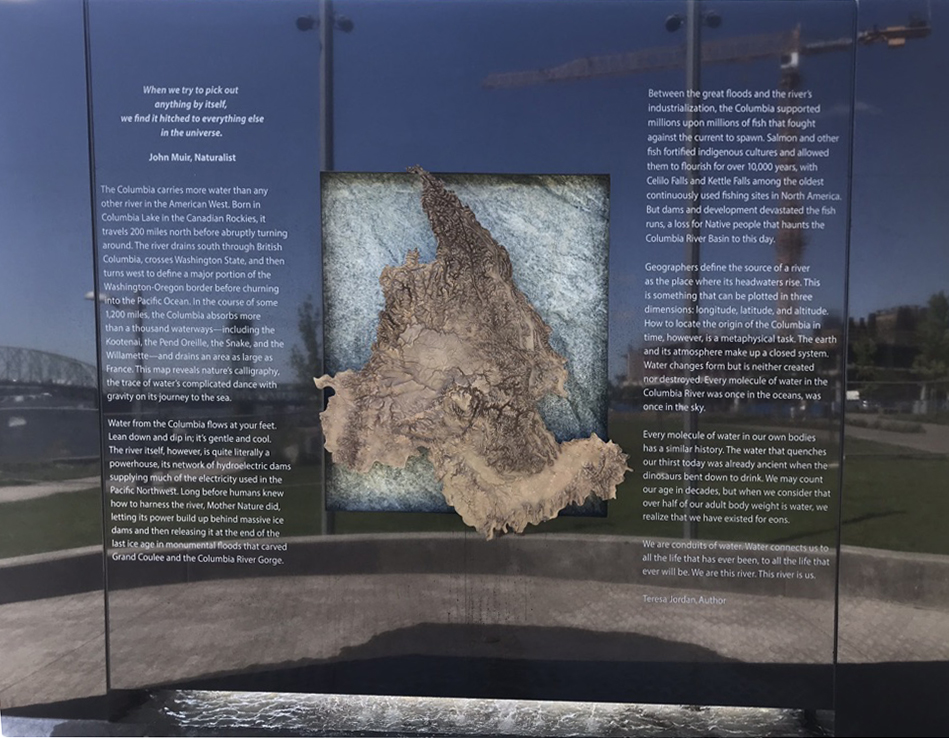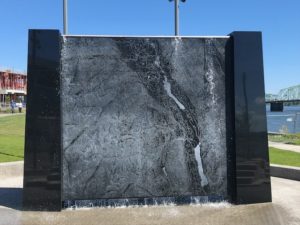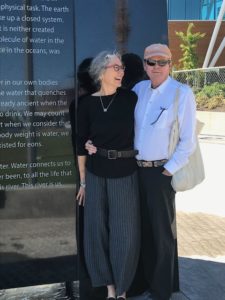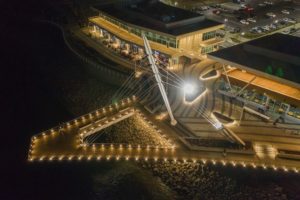
Vancouver, Washington: Riverfront Park
A Larry Kirkland Project / Text by Teresa Jordan
When we try to pick out anything by itself, we find it hitched to everything else in the universe. — Naturalist John Muir
The Columbia carries more water than any other river in the American West. Born in Columbia Lake in the Canadian Rockies, it travels 200 miles north before turning abruptly around. It drains south through British Columbia, crosses Washington State, and then turns west to define a major portion of the Washington-Oregon border before it churns out into the Pacific Ocean. In the course of some 1200 miles it absorbs more than a thousand waterways–including the Kootenay, the Pend Oreille, the Snake, and the Willamette–and drains an area as large as France. This map reveals nature’s calligraphy, the trace of water’s complicated dance with gravity on its downward journey to the sea.
Water from the Columbia flows at your feet. Lean down and dip in; it’s gentle and cool. The river itself, however, is quite literally a powerhouse, its network of hydroelectric dams supplying much of the electricity used in the Pacific Northwest. Long before humans knew how to harness the river, Mother Nature did, letting its power build up behind massive ice dams and then releasing it at the end of the last ice age in monumental floods that carved Grand Coulee and the Columbia River Gorge.
In between the great floods and the river’s industrialization, the Columbia supported millions upon millions of fish, fighting their way up the current to spawn. Salmon and other fish fortified indigenous cultures and allowed them to flourish for over 10,000 years, with Celilo Falls and Kettle Falls among the oldest continuously used sites in North America. But the dams devastated the fish runs, a loss for Native people that haunts the Columbia River Basin to this day.
Geographers define the source of a river as the place where its headwaters rise. This is something that can be plotted in three dimensions: longitude, latitude, and altitude. How to locate the origin of the Columbia in time, however, is a metaphysical task. The earth and its atmosphere make up a closed system. Water changes form but is neither created nor destroyed. Every molecule of water in the Columbia River was once in the oceans, was once in the sky.
Every molecule of water in our own bodies has a similar history. The water that quenches our thirst today was already ancient when the dinosaurs bent down to drink. We may count our age in decades, but when we consider that over half of our adult body weight is water, we realize that we have existed for eons.
We are conduits of water. Water connects us to all the life that has ever been, to all the life that ever will be. We are this river. This river is us.
– Teresa Jordan
You can learn more about Vancouver Riverfront Park and Grant Street Pier here.

Monolith backside

Teresa with Larry Kirkland

Grant Street Pier and Vancouver Waterfront Park
